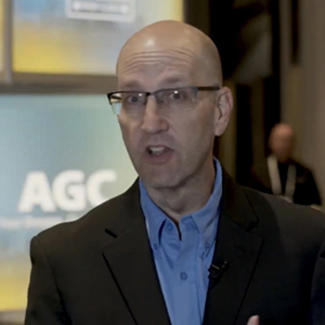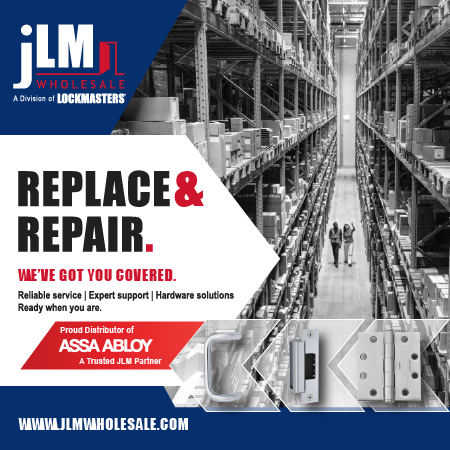New & Exciting!
New fabricator event coming from the NGA
You may have seen the news lately that the NGA announced the formation of a new event called GFAB; NGA Glass Fabricator Conference, coming to Chicago next June. This is big. There has always been a gap in the market for a comprehensive fabricator gathering, similar to BEC for glaziers, and now we’ve got one. Previous events like GPAD were fabulous, but this event takes those necessary steps further in offering a more complete opportunity for the fabrication side of our business to learn and grow. Here is the official news on the event, and if you are a glass fabricator, get ready to be there to help push you and your operation further.
Elsewhere…
Latest ABI
The next Architectural Billings Index drops this Wednesday. Last month, it had ticked up to 47.2 from the previous month's dreadful 43.2. My prediction? 45.6. Remember 50 is break even and we haven’t seen that often in the last 2 years.
Glassworks retirement
Saw a note online that one of my favorites, Tish Oye of Glassworks in Washington State is calling it a day after 55 years in business. Years ago, as I was building up this blog, Tish was kind enough to reach out with her support and some cool links. She consistently delivered outstanding work and made a significant impact in her region and within this field. Best of luck, Tish, going forward!
Top 10 airports
Crow eating time. My pal Lyle Shimazu has pounded me for years that the Portland Airport was the best around. I have pushed back constantly. Well, the 2025 ranks are out, and Lyle’s influence must be strong as PDX took the top spot. Stunning. As for the rest of the top 10…
10. Detroit- My home airport, and it should be much higher.
9. Salt Lake City- The fresh remodel there helping?
8. Indy- Been years since I’ve been there, so no opinion.
7. ABQ- I’ve never been to this one, though ABQ will always play a role for me since it was a significant part of the best TV show ever, “Breaking Bad.”
6. Providence- Kind of surprised this is as high as it is.
5. Seattle Paine- Not SeaTac… I have only flown into SeaTac, so I defer to my friends in the Pacific Northwest on this one.
4. MSP- Hey, I love love love Minnesota. Nice… but folks… no way is that airport is 4th best.
3. DCA- Way too high for this one. Packed corridors and terrible bathroom setup.
2. Long Beach- Small and sharp airport. It's a bit hard to compare to the bigger ones on the list, though.
And as noted, PDX/Portland was 1st…Good work Lyle.
Summer Q&A series
Last this week… The Summer Q&A series heads to California and to an iconic specialty glass fabricator. I caught up with Kirk Johnson, CEO at Pulp Studio. Kirk is a supreme talent, and he delivered a lot of insight that I found extremely valuable.
MAX: It's been a long time. Been a long time. You're my first guest from California. How's life out there? How's business? How are you guys holding up?
KIRK: It's been bumpy. There’s a lot of uncertainty on the West Coast—between the wildfires, political tension, and ongoing immigration issues, it’s a complex environment. These external pressures definitely impact day-to-day operations and the mindset of the workforce.
MAX: How about operationally? Business wise, you’ve got great products and setup.
KIRK: So just a couple of high points. One, as you know and some don't, Pulp has a myriad of processes and or products or equipment that very few others have across the country. So the bulk of our business is outside of California right now and the east coast is fairly strong for us, which creates some challenges, especially on the freight side. We also have bending capabilities, kiln slumping, that narrows the playing field. So we do see even in this softer climate, lots of activity on the custom bending side. We can do chemically strengthened, non-true radius multilayer, very high end.
I think a few things are obstacles. Our sales process, because we drive down through the A&D market for specification is a very elongated process. So, patience is a virtue. There was a time when a handshake would ensure that you would get that job. Now, unfortunately, if we don't front load with developmental costs or do an NDA with some sort of contractual obligation, a lot of stuff gets farmed out to China, where they take a mockup and then they try to duplicate or replicate. That's a big part of the challenge right now. The industry has also become more litigious. We’re dealing with stricter contracts, detailed inspection requirements, and tighter tolerances that go well beyond ASTM standards. That’s why we’ve had to bring in full-time technical personnel—to help manage expectations and ensure clients understand exactly what they’re getting. It's a necessary step, even if the cost recovery can be difficult.
MAX: How’s the market?
KIRK: The economic climate in general, I would say is pensive. We have a strong pipeline that is moving slower than we would like. GCs are holding tight and money, cash is king, lots of downward pricing pressures and “oh, well, we want you to do it and you guys look great on the mockup, but I got this price over here for X percent less,” et cetera. So there's more of that than typical. There are quite a few changes on the A&D side with EPDs and sustainability. This may be a little controversial but there's some people in our space that are claiming to have EPDs that are self-created and not third party verified. So that becomes a challenge in the architectural world that says, “oh good, I can check that box,” but it's not real. Third party verification for EPDs is very expensive, and Pulp is very committed and has been since its inception on “green.” A Three and a half million dollars solar investment where half of our consumption is coming from ourselves. Recycling glass, water, trash, paper, plastic, is very important to us. Plus, there's a secondary plan to add more panels, solar panels to try and be completely self-sufficient and not pulling from the grid.
MAX: Pulp has always been out and front and different than the norm.
KIRK: That’s definitely part of our identity. Internally, we’re clear about what we offer and how we work. Externally, though, I think there’s still room to improve how we communicate that. I still think there's some question marks out in the marketplace. As we know, losing one of our founders (Bernard Lax) was a major moment, it's been four years next month.
MAX: It's amazing that it's been four years because it feels like it was just yesterday.
KIRK: Yes, right. Super-fast, time flies. In the aftermath, we had to ask ourselves: do we stay independent or align with another organization? There were definitely rumors. But the answer was clear—Linda Nishimoto Lax remains the owner, and I’ve been running the business for eight years now. In spite of a lot of naysayers and skepticism, hearing “Oh, they won't make it”. We’re not going anywhere, and every year since then, we’ve won national or industry awards. We’ve continued to push the envelope with custom work. That speaks volumes about the team and the direction we’re headed.
MAX: The toughest thing is the runway to get projects. You listed a lot of different challenges, but the fact that you may have to wait 12, 18, 24 months and then deal with it and probably have to re-quote it three or four times, that's tough.
KIRK: It is. Two great examples: we’re currently working on a flagship Rolex project in New York—it’s a seven-figure job that’s been in motion for three years. And here in LA, we’ve done five of the seven Metro stations being prepped for the Olympics. The first of those began four years ago. We just completed production. That kind of timeline is the norm in our world.
MAX: Pulpstudio.com is the website, correct?
KIRK: Correct, it’s going through a revamp, so be patient with us. We're doing some additional changes to our website and marketing and some things like that, being a little bit more transparent than historical, but yeah, that's where you can reach us.
MAX: Well, if this is a revamp that you're going through, it's looking darn good right now.
KIRK: The one thing that we really are able to focus on is projects we've previously done that other people said, “oh no, that can't be done.” Or it was tried with someone else and then came back to us. Like a lot of companies, we wrap a project and immediately move on to the next—without stopping to capture the result. That’s something we’re actively working on.
Thank you, Kirk! Keep up the great work out there!


